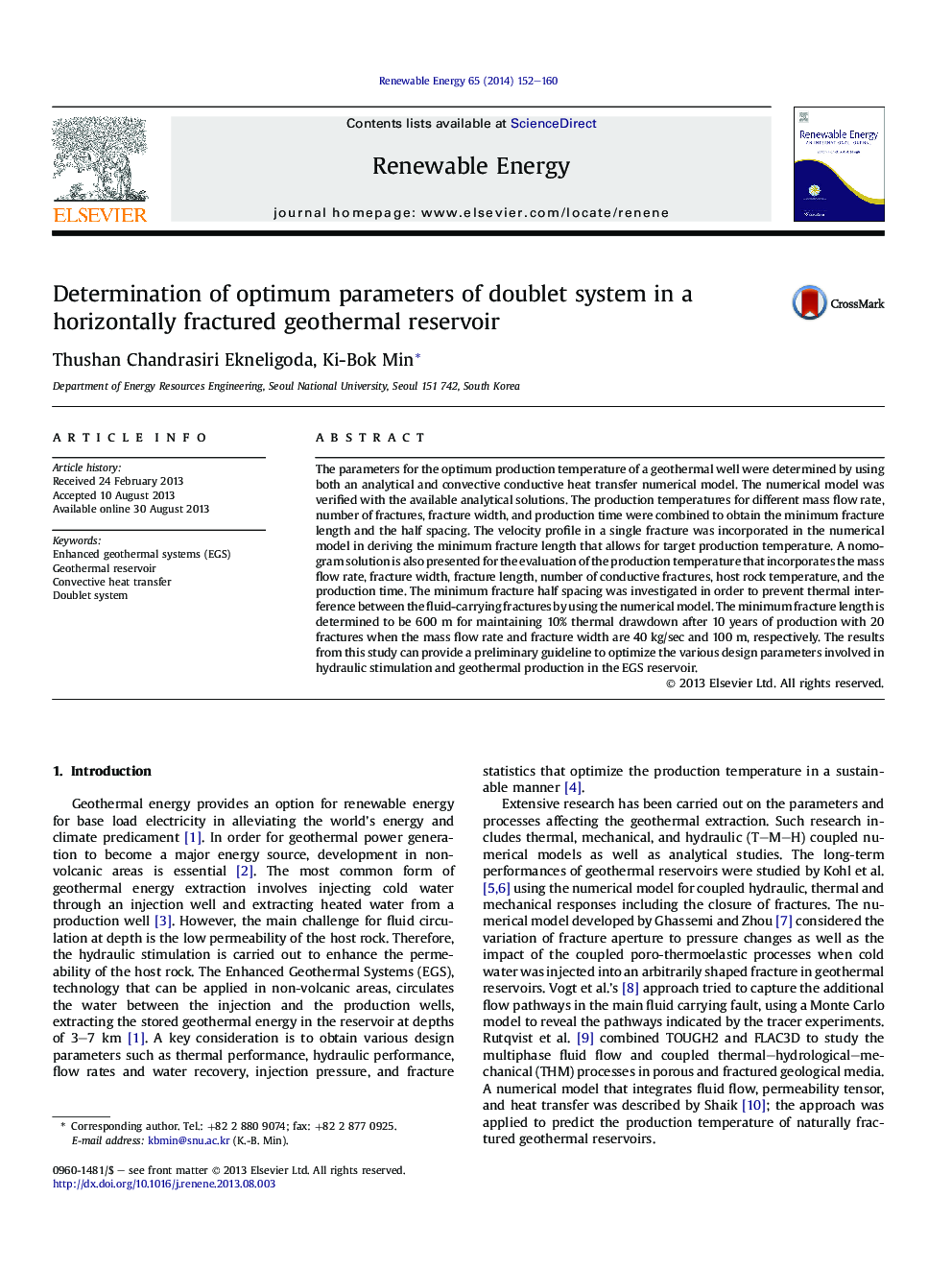| Article ID | Journal | Published Year | Pages | File Type |
|---|---|---|---|---|
| 300221 | Renewable Energy | 2014 | 9 Pages |
•Convective conductive coupled numerical model for EGS reservoir.•Minimum distance between injection and production wells.•Prediction of geothermal production temperature using nomogram.•Thermal interference between fluid-carrying fractures.
The parameters for the optimum production temperature of a geothermal well were determined by using both an analytical and convective conductive heat transfer numerical model. The numerical model was verified with the available analytical solutions. The production temperatures for different mass flow rate, number of fractures, fracture width, and production time were combined to obtain the minimum fracture length and the half spacing. The velocity profile in a single fracture was incorporated in the numerical model in deriving the minimum fracture length that allows for target production temperature. A nomogram solution is also presented for the evaluation of the production temperature that incorporates the mass flow rate, fracture width, fracture length, number of conductive fractures, host rock temperature, and the production time. The minimum fracture half spacing was investigated in order to prevent thermal interference between the fluid-carrying fractures by using the numerical model. The minimum fracture length is determined to be 600 m for maintaining 10% thermal drawdown after 10 years of production with 20 fractures when the mass flow rate and fracture width are 40 kg/sec and 100 m, respectively. The results from this study can provide a preliminary guideline to optimize the various design parameters involved in hydraulic stimulation and geothermal production in the EGS reservoir.
